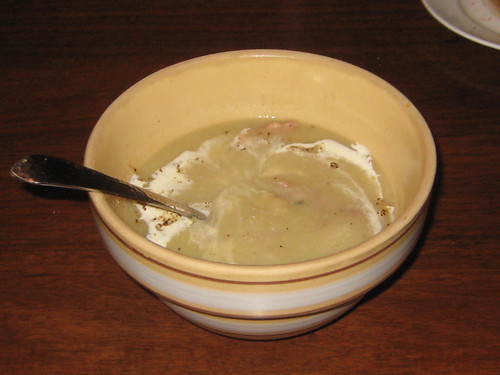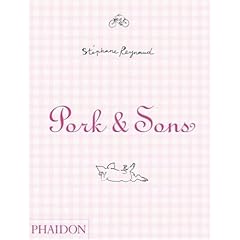 As you might recall, I professed my love of charcuterie to the blogosphere back in June, with a post about making fresh bratwurst for my daughter's first birthday party. Since that first experiment with DIY sausage making, I knew it would simply be a matter of time before I ventured into the realm of dry-curing raw pork, traditional style. I don't have the space to go into great detail on the subject, but it's a fairly simple process with a few, very consequential, nuances. You grind some pork, mix it with some salt and others seasonings, stuff it in casings, and hang it somewhere for anywhere from a few days to six months or more. The nuances are few but critical: absolute cleanliness in all aspects of preparation, the pork has to remain cold during each step of assembly (to retain the right texture), and the dry-curing area must be 60 degrees F with about 60-70% humidity. If it works, a harmless white mold will grow on the exterior of the sausage, which prevents the growth of harmful microbes and contributes to the end result's distinctive flavor. Cool!
As you might recall, I professed my love of charcuterie to the blogosphere back in June, with a post about making fresh bratwurst for my daughter's first birthday party. Since that first experiment with DIY sausage making, I knew it would simply be a matter of time before I ventured into the realm of dry-curing raw pork, traditional style. I don't have the space to go into great detail on the subject, but it's a fairly simple process with a few, very consequential, nuances. You grind some pork, mix it with some salt and others seasonings, stuff it in casings, and hang it somewhere for anywhere from a few days to six months or more. The nuances are few but critical: absolute cleanliness in all aspects of preparation, the pork has to remain cold during each step of assembly (to retain the right texture), and the dry-curing area must be 60 degrees F with about 60-70% humidity. If it works, a harmless white mold will grow on the exterior of the sausage, which prevents the growth of harmful microbes and contributes to the end result's distinctive flavor. Cool!
I embarked on my first dry-curing effort - a traditional French "saucisson sec" - over the holidays, when I had some extra time to prepare a decent curing area and procure the right ingredients. I've posted the recipe below. Anyone interested in at least learning about these ancient foods should buy one of my favorite books: Charcuterie: The Craft of Salting, Smoking, and Curing, by Michael Ruhlman and Brian Polcyn. In addition to compiling an exhaustive collection of great recipes, they offer detailed descriptions of the required techniques, safety precautions, and equipment.
I took the above photo tonight, after hanging my saucissons to dry in an unfinished corner of my basement. I'm using a humidifier to keep the right amount of moisture in the air (Minnesota has very dry winters). Theoretically, they won't be ready to eat for at least 3 weeks, so I'll try to post an update and photo each week to track their progress.
ingredients:
- 4.5 lbs organic boneless pork shoulder, diced (only boutique hog will work here)
- 8 ounces pork belly or back fat, diced
- 3 tbsp kosher salt
- 1 tbsp coarsely ground black pepper
- 1.5 tbsp sugar
- 1 tsp curing salt (which contains sodium nitrite, to prevent botulism growth)
- 1 tbsp minced garlic
- 12 feet hog casings or 3 feet of hog middles, soaked in tepid water for at least 30 minutes and rinsed
technique:
- Grind the pork and fat through the large die into a bowl set in ice.
- Combine the meat with the remaining ingredients in the bowl of a standing mixer. Using the paddle attachment, mix on the lowest speed until the ingredients are evenly combined, about 1 minute.
- Stuff the mixture into the casings and twist into 12-inch links. Prick the casings all over with a sterile pin or needle to remove any air pockets and facilitate drying.
- Hang the sausage (ideally at 60 degrees F with 60-70% humidity) until it feels completely stiff throughout and/or it has lost 30 percent of its weight, 18-20 days for links, a month or more for large sausages.







